Abstract
1. In urethane or ketamine-anaesthetized rats, salivary secretion was observed when local brain sites or trunk skin were stimulated thermally or electrically. 2. Salivary secretion was facilitated by bilateral local brain warming. Sensitive sites were restricted to the preoptic area and anterior hypothalamus, but in a region distinct from a previously reported sensitive site for producing saliva-spreading behaviour. 3. Unilateral warming of the preoptic area produced greater salivary secretion from the ipsilateral submandibular/sublingual salivary glands than from the contralateral glands. Electrical stimulation of the same sites elicited salivation only from the ipsilateral glands. 4. Trunk skin, not including the scrotum, was unilaterally cooled when spontaneous salivary secretion was observed in a hot environment. Salivary secretion from both sides was equally suppressed in response to the unilateral skin cooling. 5. We conclude that efferent signals from the anterior part of the hypothalamus project dominantly to the ipsilateral salivary gland for thermally induced salivary secretion. Thermal signals from the skin of either side of the trunk, on the other hand, appear to be integrated and to affect salivary secretion bilaterally.
Full text
PDF
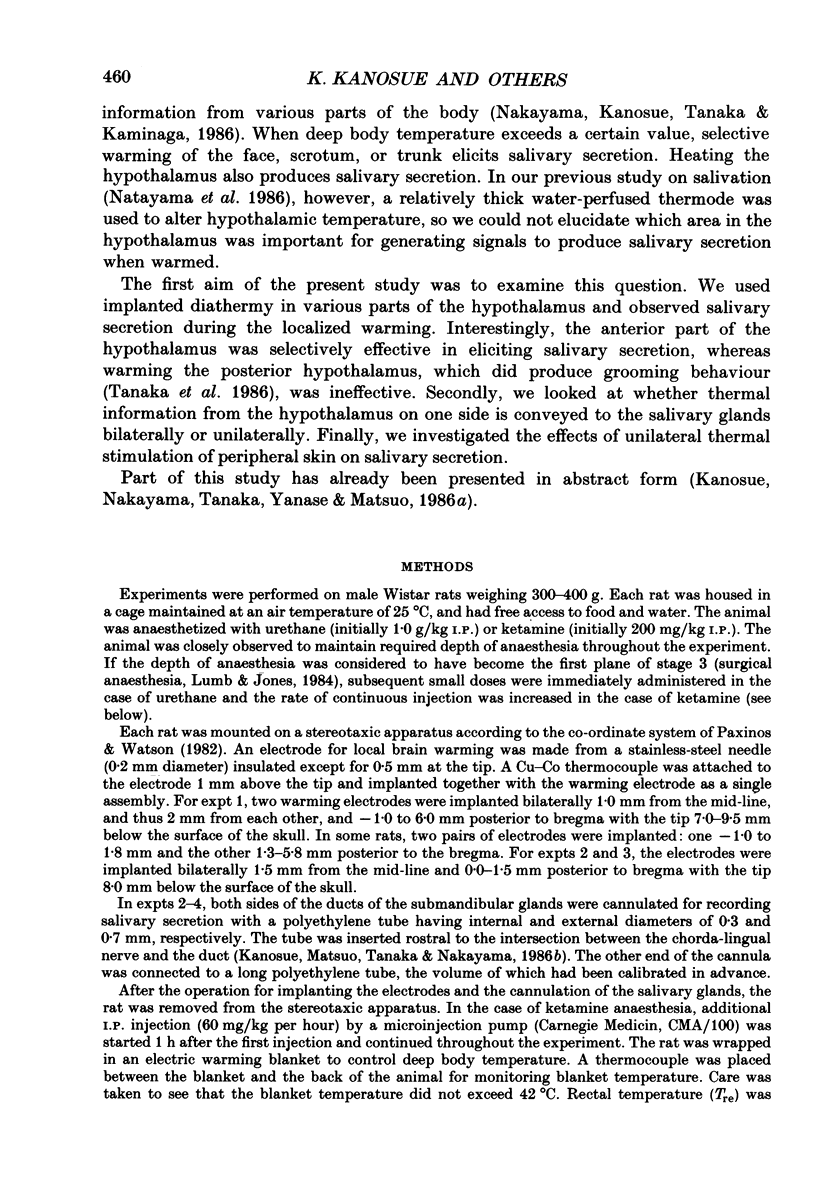

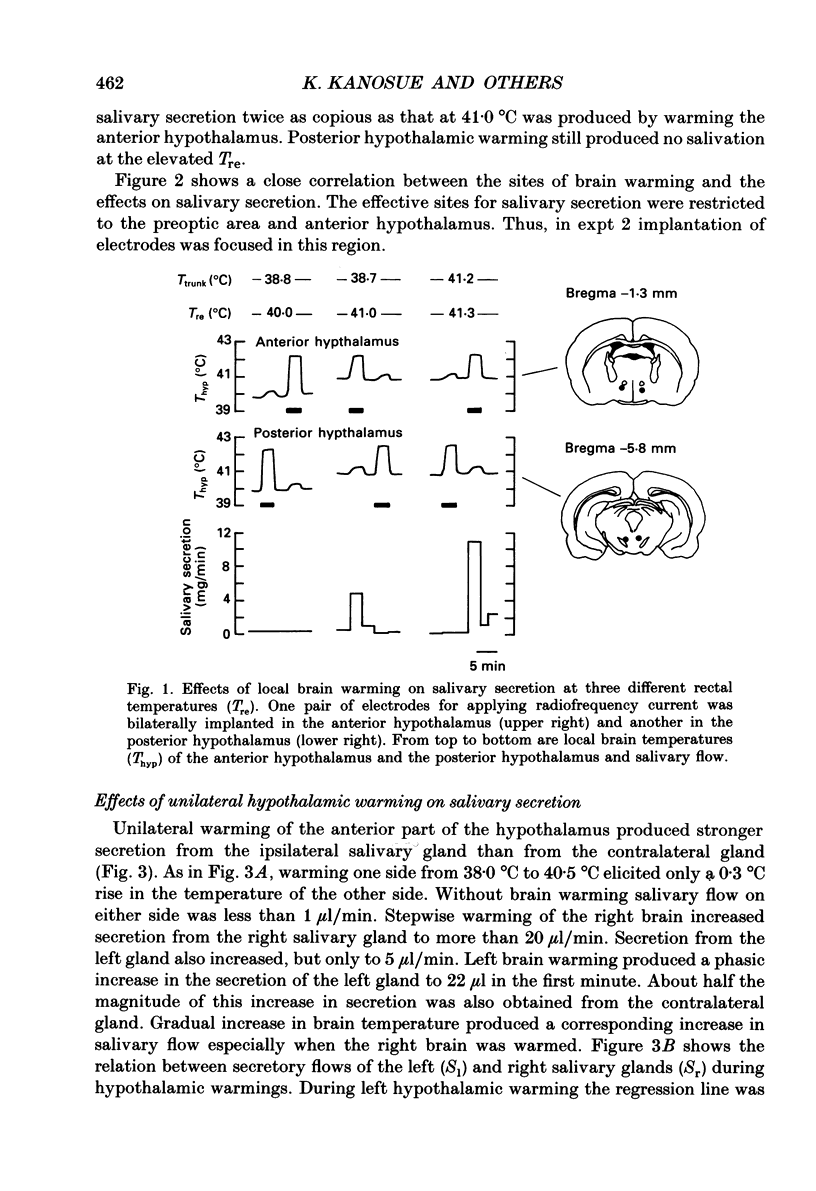
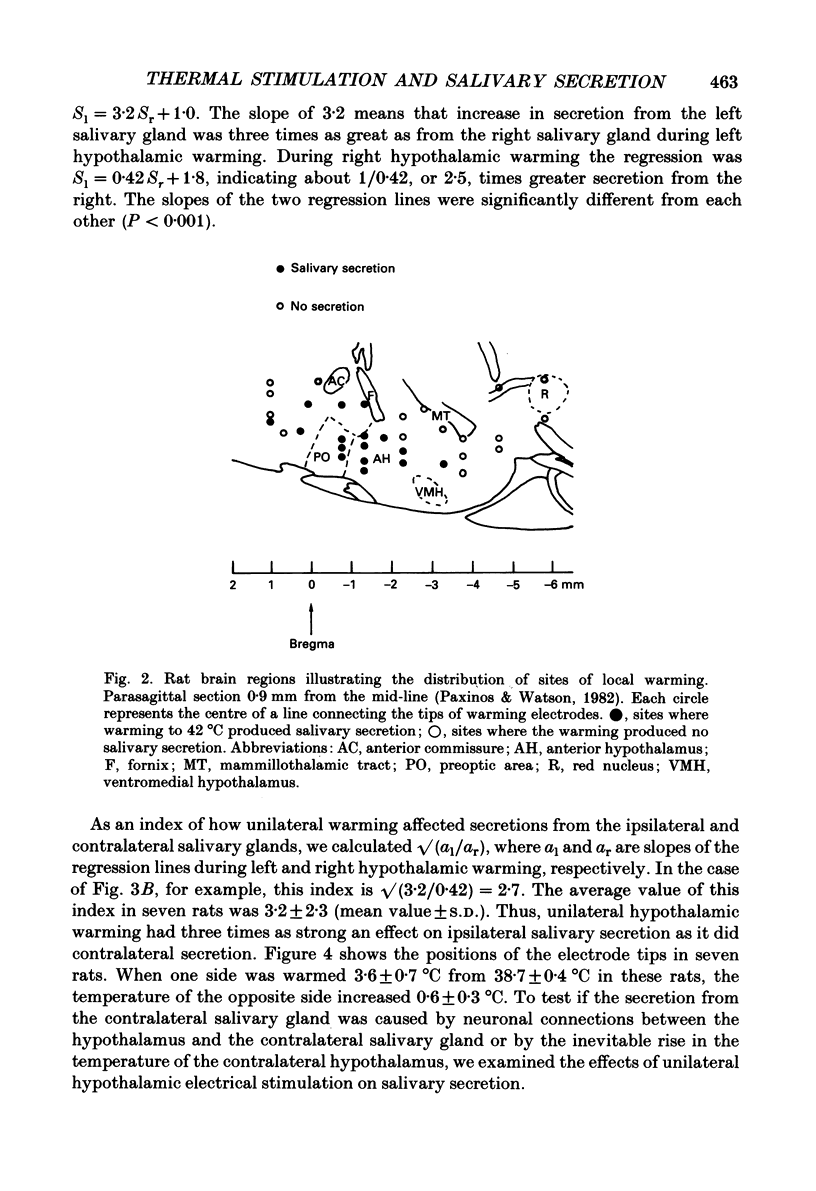
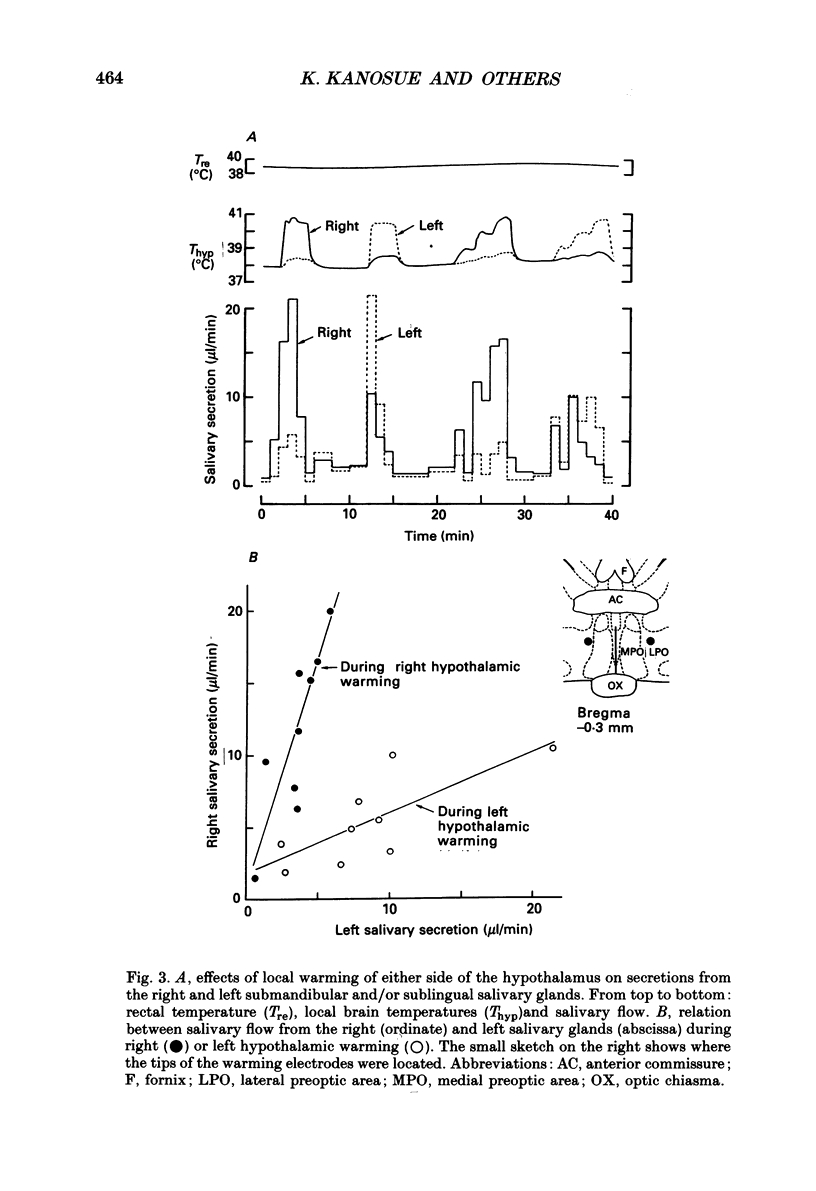





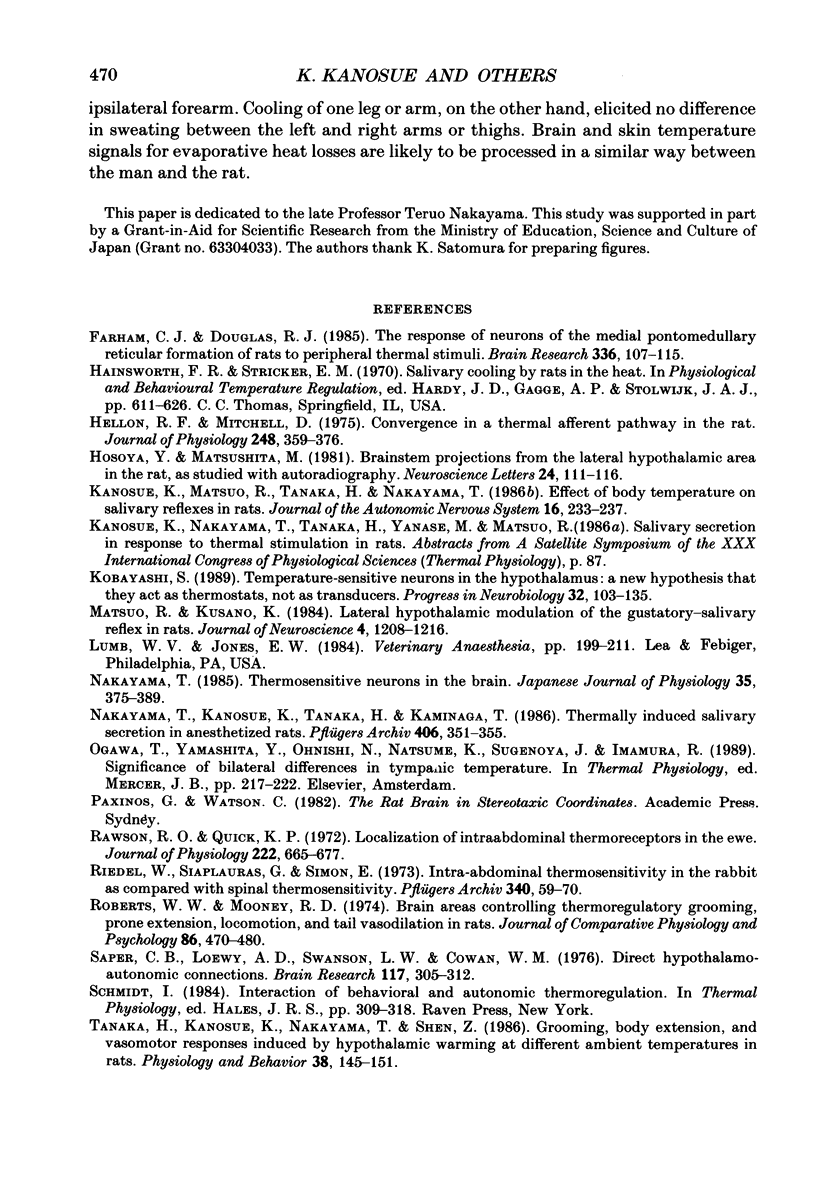
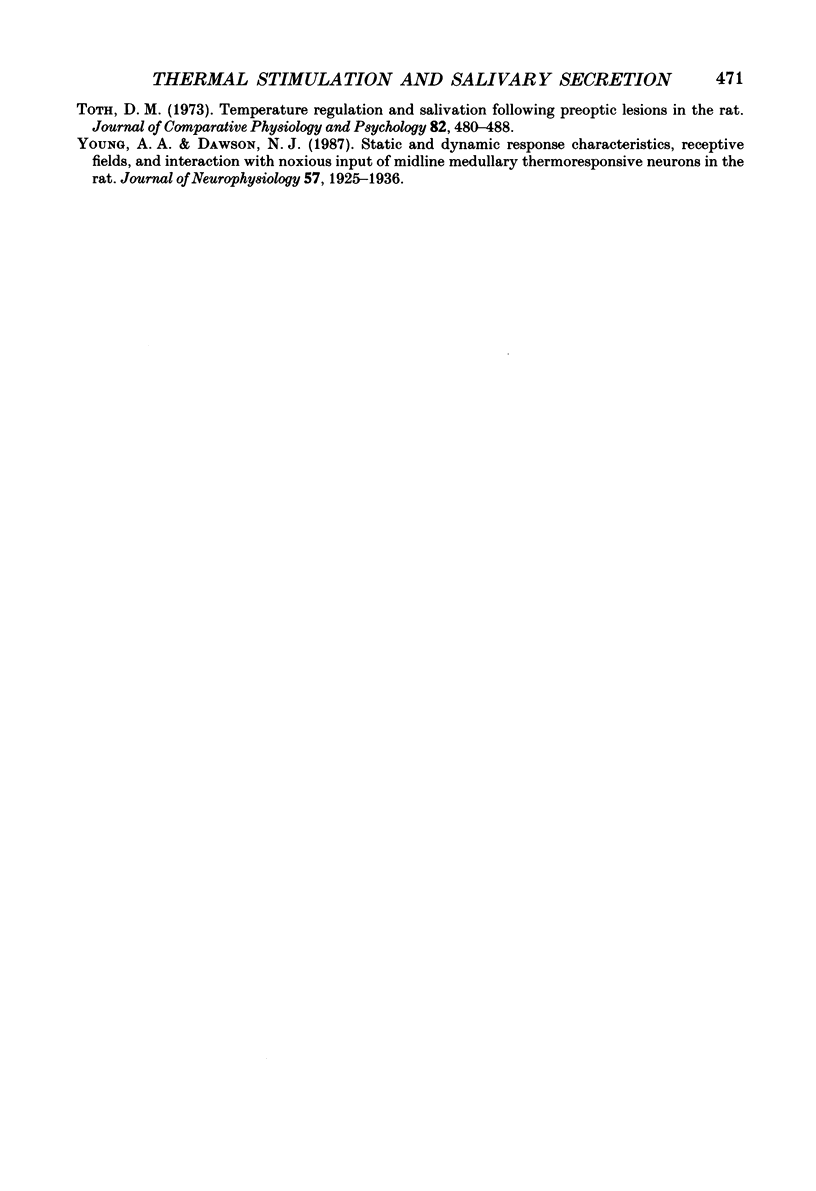
Selected References
These references are in PubMed. This may not be the complete list of references from this article.
- Farham C. J., Douglas R. J. The response of neurons of the medial pontomedullary reticular formation of rats to peripheral thermal stimuli. Brain Res. 1985 Jun 10;336(1):107–115. doi: 10.1016/0006-8993(85)90421-4. [DOI] [PubMed] [Google Scholar]
- Hellon R. F., Mitchell D. Convergence in a thermal afferent pathway in the rat. J Physiol. 1975 Jun;248(2):359–376. doi: 10.1113/jphysiol.1975.sp010979. [DOI] [PMC free article] [PubMed] [Google Scholar]
- Hosoya Y., Matsushita M. Brainstem projections from the lateral hypothalamic area in the rat, as studied with autoradiography. Neurosci Lett. 1981 Jul 2;24(2):111–116. doi: 10.1016/0304-3940(81)90232-9. [DOI] [PubMed] [Google Scholar]
- Kanosue K., Matsuo R., Tanaka H., Nakayama T. Effect of body temperature on salivary reflexes in rats. J Auton Nerv Syst. 1986 Jul;16(3):233–237. doi: 10.1016/0165-1838(86)90029-9. [DOI] [PubMed] [Google Scholar]
- Kobayashi S. Temperature-sensitive neurons in the hypothalamus: a new hypothesis that they act as thermostats, not as transducers. Prog Neurobiol. 1989;32(2):103–135. doi: 10.1016/0301-0082(89)90012-9. [DOI] [PubMed] [Google Scholar]
- Matsuo R., Kusano K. Lateral hypothalamic modulation of the gustatory-salivary reflex in rats. J Neurosci. 1984 May;4(5):1208–1216. doi: 10.1523/JNEUROSCI.04-05-01208.1984. [DOI] [PMC free article] [PubMed] [Google Scholar]
- Nakayama T., Kanosue K., Tanaka H., Kaminaga T. Thermally induced salivary secretion in anesthetized rats. Pflugers Arch. 1986 Apr;406(4):351–355. doi: 10.1007/BF00590935. [DOI] [PubMed] [Google Scholar]
- Nakayama T. Thermosensitive neurons in the brain. Jpn J Physiol. 1985;35(3):375–389. doi: 10.2170/jjphysiol.35.375. [DOI] [PubMed] [Google Scholar]
- Rawson R. O., Quick K. P. Localization of intra-abdominal thermoreceptors in the ewe. J Physiol. 1972 May;222(3):665–667. doi: 10.1113/jphysiol.1972.sp009820. [DOI] [PMC free article] [PubMed] [Google Scholar]
- Riedel W., Siaplauras G., Simon E. Intra-abdominal thermosensitivity in the rabbit as compared with spinal thermosensitivity. Pflugers Arch. 1973;340(1):59–70. doi: 10.1007/BF00592197. [DOI] [PubMed] [Google Scholar]
- Roberts W. W., Mooney R. D. Brain areas controlling thermoregulatory grooming, prone extension, locomotion, and tail vasodilation in rats. J Comp Physiol Psychol. 1974 Mar;86(3):470–480. doi: 10.1037/h0036147. [DOI] [PubMed] [Google Scholar]
- Saper C. B., Loewy A. D., Swanson L. W., Cowan W. M. Direct hypothalamo-autonomic connections. Brain Res. 1976 Nov 26;117(2):305–312. doi: 10.1016/0006-8993(76)90738-1. [DOI] [PubMed] [Google Scholar]
- Tanaka H., Kanosue K., Nakayama T., Shen Z. Grooming, body extension, and vasomotor responses induced by hypothalamic warming at different ambient temperatures in rats. Physiol Behav. 1986;38(1):145–151. doi: 10.1016/0031-9384(86)90145-9. [DOI] [PubMed] [Google Scholar]
- Toth D. M. Temperature regulation and salivation following preoptic lesions in the rat. J Comp Physiol Psychol. 1973 Mar;82(3):480–488. doi: 10.1037/h0034118. [DOI] [PubMed] [Google Scholar]
- Young A. A., Dawson N. J. Static and dynamic response characteristics, receptive fields, and interaction with noxious input of midline medullary thermoresponsive neurons in the rat. J Neurophysiol. 1987 Jun;57(6):1925–1936. doi: 10.1152/jn.1987.57.6.1925. [DOI] [PubMed] [Google Scholar]


